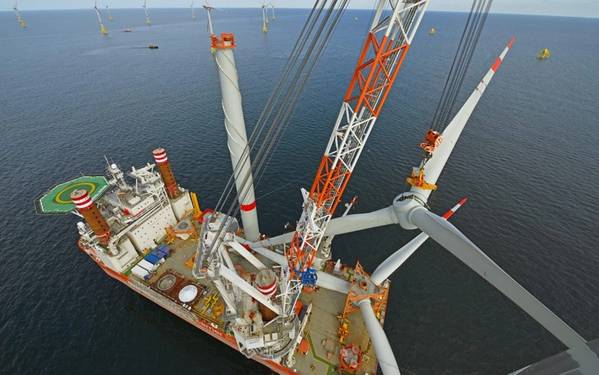
Late last week, a large Equinor spending allotment passed under the radar of many a news stream: the Norwegian offshore operator was given a $230 million grant by largest shareholder, Oslo, to pursue wind projects, or at least one in particular.
Equinor isn’t the only heavyweight oil and gas player in the wind game: Shell and Gazprom are newly invested off the Eastern Seaboard and across Russia. Sometimes hydrocarbons players lay renewable investment plans, then withdraw, only to re-enter the sector elsewhere. For Equinor’s government shareholders, however, there’s much more at stake than harnessing the wind (the energy of which would be vastly superfluous in hydro-Norway) or matching peer moves.
No, there’s nothing less at stake here than securing perceived short-to-medium-term political capital, attracting new investors and getting payback for national financial backing of green-tech entrepreneurialism. All seem to require the credibility that comes with having your own, in-country wind parks, onshore or off.
The new, stately largesse for Equinor is aimed, this time, at the Hywind Tampen Project, a planned wind park of 11 turbines set between North Sea fields, Snorre and Gulfaks, which would absorb their electrical power instead of using diesel generators. Licensees will reportedly meet shortly to decide project sanction for a $550 million project subsidized by Oslo’s arms length energy incubator entity, Enova, tax write-offs and a NOx fund that’ll all but pay for the wind park in about five years.
Some 200,000 metric tons of CO2 emissions cuts add additional value and tradability.
Though the administrative bottlenecks that once clogged wind projects in Norway have partly cleared, new, organized resistance to onshore wind power has flamed up from landowners and coastal communities which this week organized nationally. Their winnable battles mean offshore wind — especially the touted, Spanish- and Norwegian-built floating HyWind turbines, called Havvind (ocean wind) in Norwegian — is the only politically viable option in Norway, and it may be the only driver of tech gains made by elements of the offshore supply chain trying to perfect wind-service.
Oil’s wind entrepreneurs
Oslo has bolstered these entrepreneurs in many ways, and newly at national centers of excellence at which billions of kroner are being flung to prop up offshore wind’s supply chain. HyWind pilots — and now HyWind Tampen — are the designated proving grounds key to offshore wind’s survival in Norway.
While Oslo’s green focus is clear (with politicians goaded, now, by striking adolescent students, heavily coached by interested parties), Equinors green investments offer some cause to pause. Their implication is that a green player, controlled by political imperatives, can sit atop oil and gas licenses and feel conflicted or, worse, merely occupy choice acreage to keep reserves under wraps.
Whatever an oil company’s motives for getting greener, being listed means being closely watched, and so deviant behavior isn’t likely. Offshore wind may be the only way to stay in the wind game, apart from buying or founding a large turbine producer or wind park operator.
Grants to build wind parks astride oilfields, however, will only rub off on staff witnessing offshore wind installations and believing their skills transferable. Some marine management is required.
Never mind that a certain Northwest European country this month declared itself “saturated” with renewable energy. Out there, in someone’s backyard, there’s finite acreage for wind resource development available, or else offshore wind can be developed and “sold” to the country whose economic zone is being utilized.
It’s that or powering your own oil platforms, as at Hywind Tampen.
Self-sustained by hydro power, Norway has become staggeringly wealthy on oil and gas earnings and its spin-offs tsunami has elevated all boats.
Oslo is hoping for a similar mini-boom of offshore-wind spin-offs, or at least more work for its fleets — always its fleets. Covering its bases, Equinor and its minders in Oslo are now keen to see wind’s spin-offs and, hitherto limited to grid ownership and sophisticated vessel conversions and new-builds.
Tall orders
Meanwhile, though not affecting HyWind, the not-in-my-backyard movement — the protest against monumental energy projects within sight of shore — has begun to seize coastal Norway’s overwhelmed landowners, a somewhat embarrassing development for roaring environmentalists. A new, national action group to contest wind projects echoes the coastal British reaction to 175-meter-high turbines.
So, Oslo and its state income earner, Equinor, are hearing it from both sides: build greener, but not here, and at the same time develop the offshore-wind supply chain locally so it can be led out to sea. For now, the oil company and turbine builder can only advertise the coming scale of wind parks, however immaterial to earnings.
After its July award of rights to develop the Empire Wind (fixed structures) project off New York, Equinor, like Shell, can boast that it will electrify thousands of American homes, and that at least one tested Norwegian-owned wind installation outfit can be counted on for the build. There will be some survey work and cable-laying.
That’s the “scale” of wind prior to saturation: there’s supply chain involvement, but little of the nation-building wrought by oil and gas. New Yorkers will simply buy power produced offshore and sold to them by their utility.
But Equinor says those Empire turbines will be three times higher than the Statue of Liberty, just 15 miles to the north.


